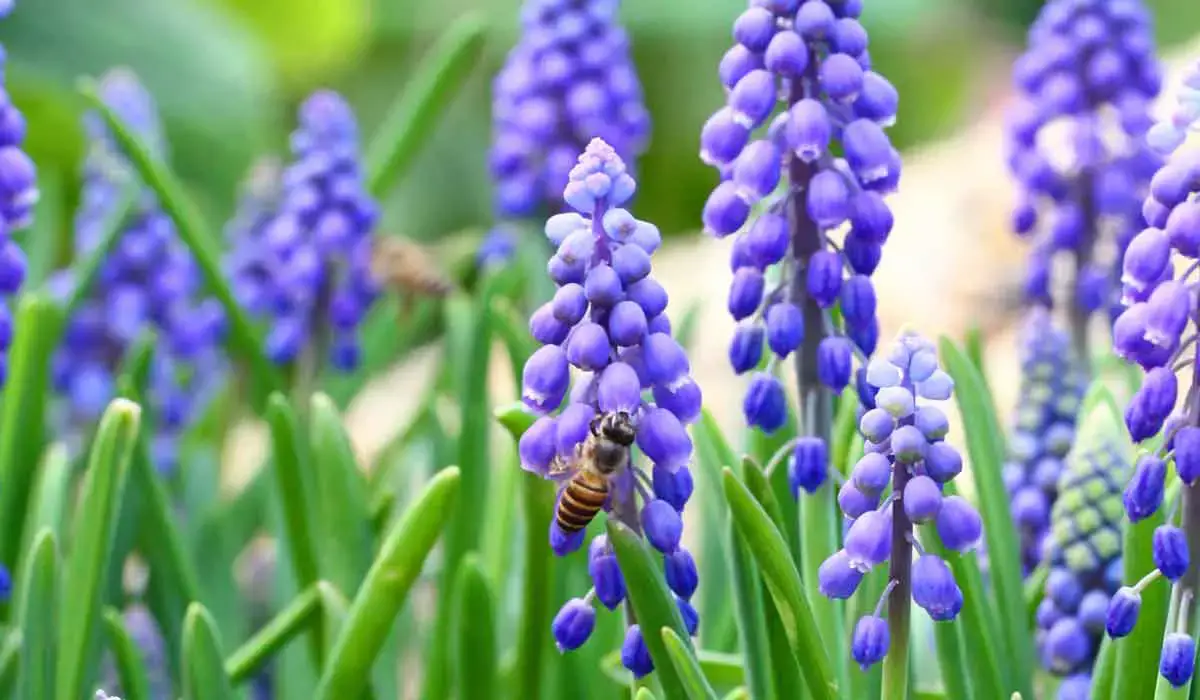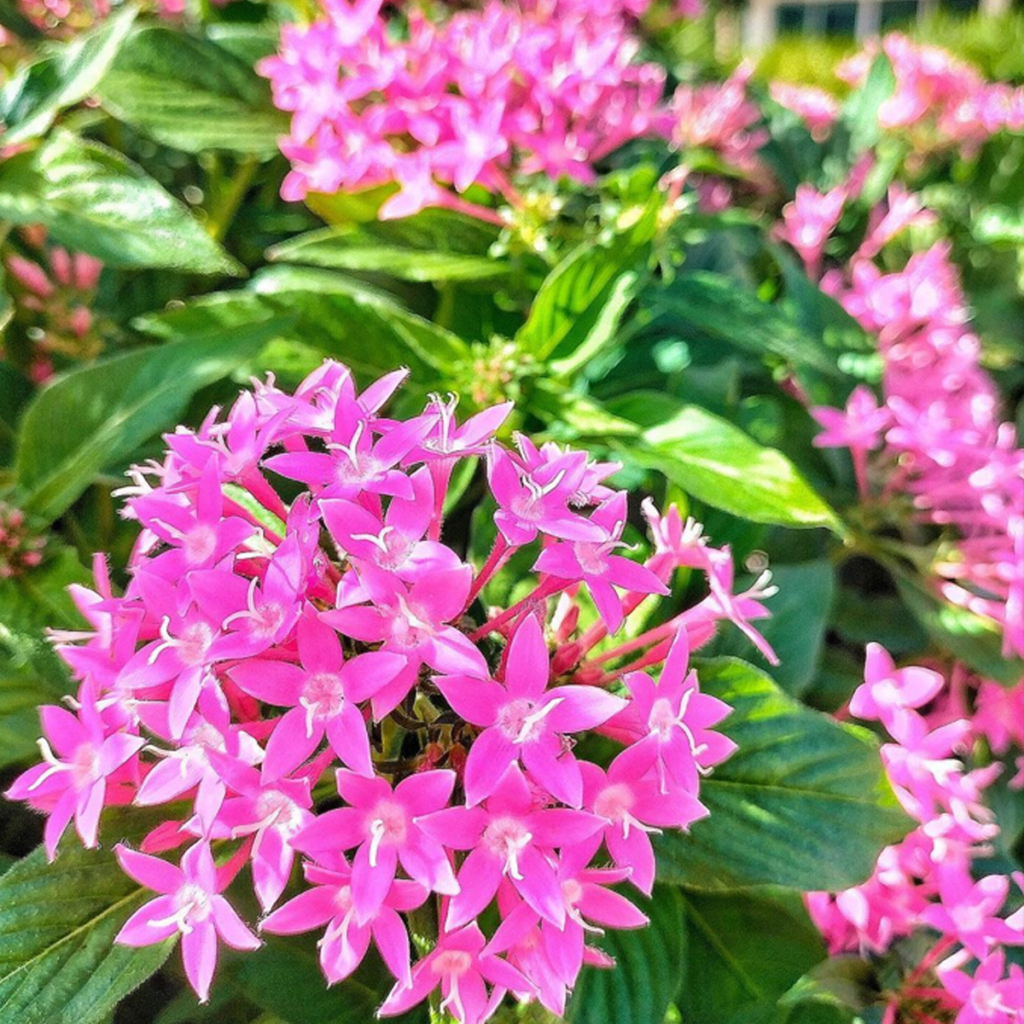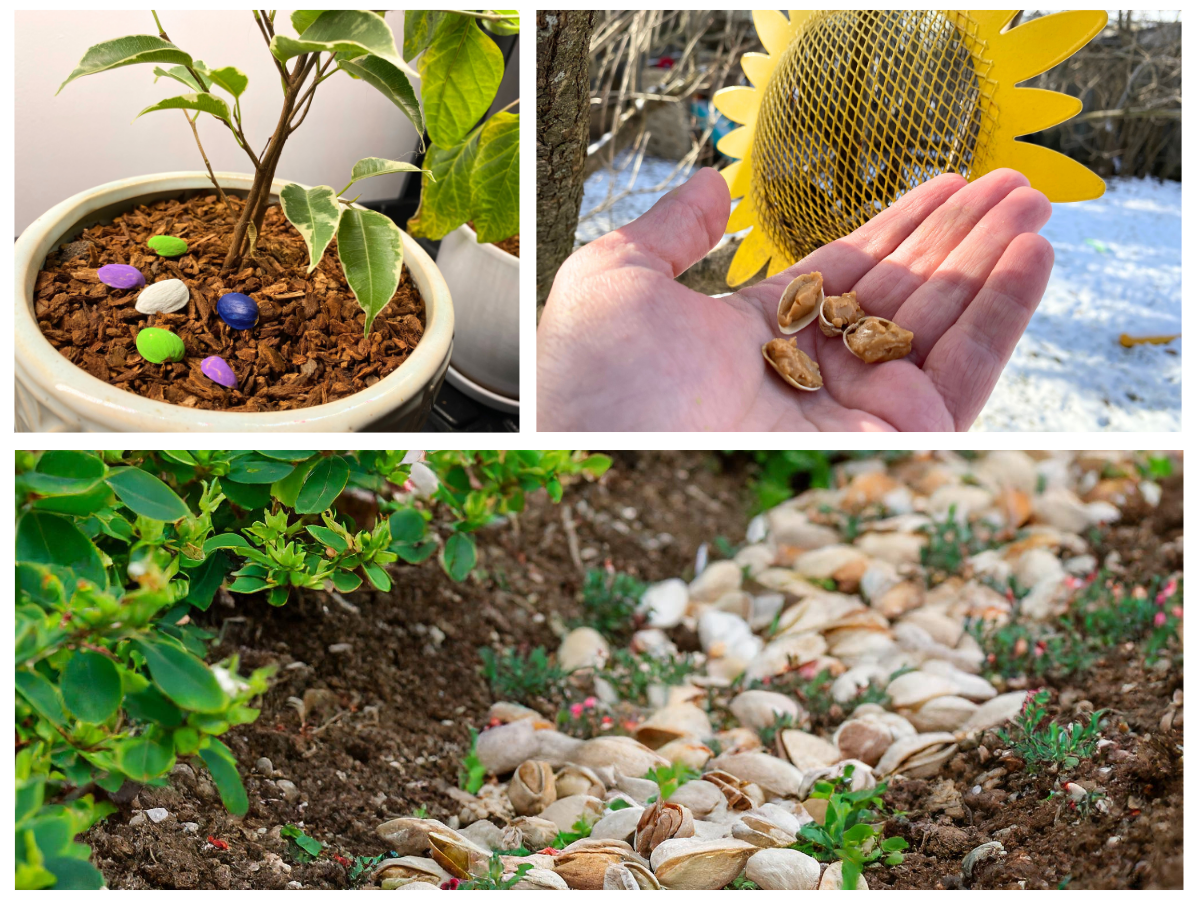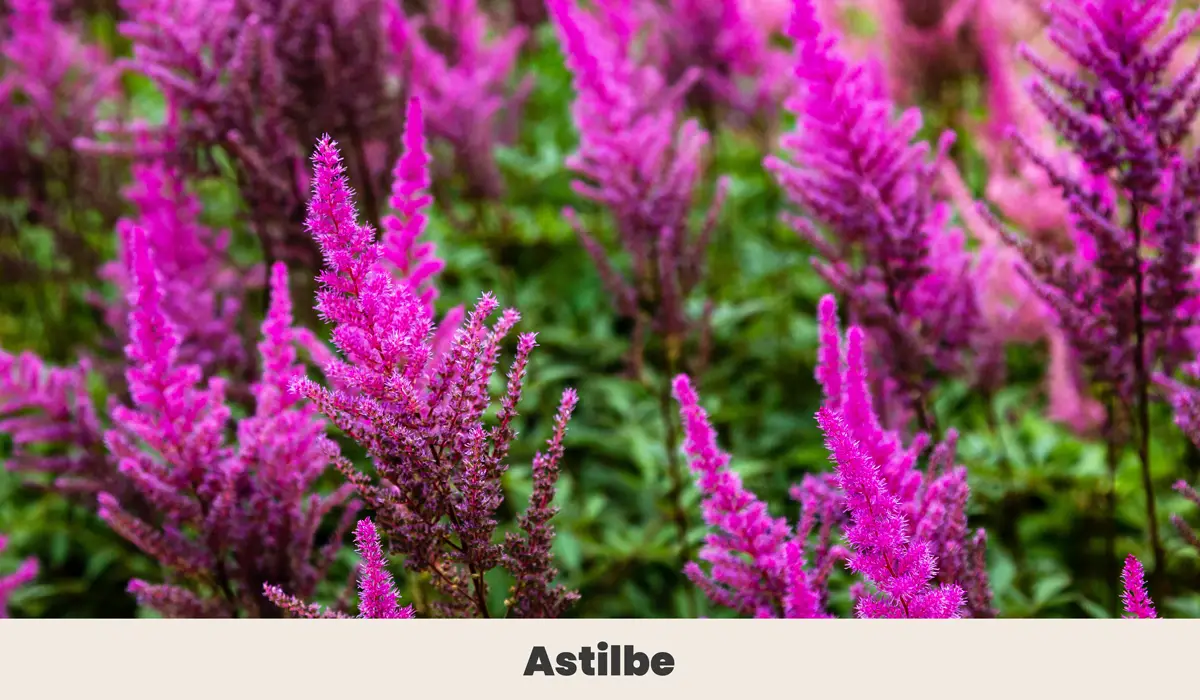11 Bell-Shaped Flowers For Your Garden

Bell-shaped flowers have an almost unexpected shape and elegant beauty, their one of my favorite flowers to add in the garden.
These charming blooms come in many colors and sizes, making them a versatile choice for any flower grower.

Below, you will find a list of the 11 most stunning bell-shaped flowers for your garden, so take a look and let me know which one is your favorite!
1. Canterbury Bell Flower (Campanula Medium)

With their tall stalks adorned with bell-shaped flowers, Canterbury bells add height and drama to any garden. The flowers range in color from blue, pink, purple, and white and emit a soft, pleasant fragrance.
| Scientific Name: | Campanula Medium |
| Growth Rate: | Moderate |
| Native Range: | Europe |
| Hardiness Range: | USDA zones 4-10 |
| Exposure: | Full sun to part shade |
| Soil Needs: | Moist, well-drained soil |
| Tolerate: | Deer, rabbits, drought |
| Fertilizing Needs: | Fertilize in spring with a balanced fertilizer |
| Pruning Needs: | Deadhead spent flowers to promote continued blooming |
2. Lily of the Valley (Convallaria Majalis)

Lily of the valley is a delicate, bell-shaped flower that emits a sweet fragrance perfect for filling any garden with the scent of spring.
The flowers typically come in white, but some cultivars have pink blooms and grow on a low stalk with long, slender leaves on a low stalk.
| Scientific Name: | Convallaria Majalis |
| Growth Rate: | Moderate |
| Native Range: | Europe, Asia, and North America |
| Hardiness Range: | USDA zones 2-7 |
| Exposure: | Part shade to full shade |
| Soil Needs: | A rich, moist, well-draining soil |
| Tolerate: | Deer, rabbits |
| Fertilizing Needs: | Fertilize in spring with a balanced fertilizer |
| Pruning Needs: | Remove any yellow or brown leaves to promote healthy growth |
3. Guinea Hen Flowers (Fritillaria Meleagris)

The beautiful Guinea Hen, also known as the checkered lily, has maroon and white bell-shaped flowers with a checkered pattern on the petals.
The plants grow from bulbs and have mottled green leaves that make a striking contrast against the flowers.
| Scientific Name: | Fritillaria Meleagris |
| Growth Rate: | Moderate |
| Native Range: | Europe |
| Hardiness Range: | USDA zones 4-7 |
| Exposure: | Full sun to part shade |
| Soil Needs: | Well-drained soil |
| Tolerate: | Deer, rodents |
| Fertilizing Needs: | Fertilize in early spring with a balanced fertilizer |
| Pruning Needs: | Deadhead spent flowers and remove any yellow or brown leaves to promote healthy growth |
4. White Mountain Heather (Cassiopemertensiana)

White Mountain Heather produces a profusion of delicate, bell-shaped flowers that hang from the stems in clusters.
They’re usually pink, but some cultivars create white or purple blooms. This low-growing evergreen shrub is perfect for rock gardens, borders, or as ground cover.
| Scientific Name: | Cassiopemertensiana |
| Growth Rate: | Slow |
| Native Range: | North America |
| Hardiness Range: | USDA zones 2-6 |
| Exposure: | Full sun to part shade |
| Soil Needs: | Acidic, well-drained soil |
| Tolerate: | Drought, deer, rabbits |
| Fertilizing Needs: | Fertilize in early spring with a slow-release fertilizer |
| Pruning Needs: | Prune back old stems after flowering to promote new growth |
5. Bluebells (Hyacinthoides)

If you’re looking for unique bell-shaped flowers, consider Bluebells. They’re charming, come in blue, pink, and white, and thrive in woodland settings.
| Scientific Name: | Hyacinthoides |
| Growth Rate: | Moderate |
| Native Range: | Europe |
| Hardiness Range: | USDA zones 3-8 |
| Exposure: | Full sun to part shade |
| Soil Needs: | Moist, well-drained soil |
| Tolerate: | Deer, rabbits |
| Fertilizing Needs: | Fertilize in early spring with a balanced fertilizer |
| Pruning Needs: | Deadhead spent flowers to promote continued blooming |
6. Mini Angel’s Trumpet (Brugmansia Arborea)

The Mini Angel’s Trumpet has large, trumpet-shaped flowers reminiscent of bells. The flowers come in various colors, including white, pink, and yellow.
They’re also fragrant, filling any patio or balcony with a charming fragrance. Consider these snowy plants if you’re looking for flowers that grow in containers and make your outdoor space look lovely.
| Scientific Name: | Brugmansia Arborea |
| Growth Rate: | Moderate |
| Native Range: | South America |
| Hardiness Range: | USDA zones 8-11 |
| Exposure: | Full sun to part shade |
| Soil Needs: | Moist, well-drained soil |
| Tolerate: | Drought, salt |
| Fertilizing Needs: | Fertilize every two weeks with a high-phosphorus fertilizer during the growing season |
| Pruning Needs: | Prune back after flowering to promote new growth |
7. Grape Hyacinths (Muscari)

Grape hyacinths make a great choice for people looking for petite, bell-shaped flowers that bloom in the spring. They’re blue or purple and grow on a single stalk.
They’re perfect for naturalizing and are ideal for planting in rock gardens, borders, or as ground cover.
| Scientific Name: | Muscari |
| Growth Rate: | Moderate to fast |
| Native Range: | Mediterranean region and Asia Minor |
| Hardiness Range: | USDA zones 3-9 |
| Exposure: | Full sun to part shade |
| Soil Needs: | Well-draining, fertile soil |
| Tolerate: | Deer and rabbit resistant, tolerant of drought and heat |
| Fertilizing Needs: | Not typically necessary |
| Pruning Needs: | Can be deadheaded after blooming to prevent self-seeding |
8. Korean Bellflower (Campanula)

Korean Bellflowers have a profusion of dainty, bell-shaped flowers, usually blue, purple, or white.
These hardy plants make a great choice for people looking for low-maintenance plants. They’re also perfect for planting in borders or rock gardens.
| Scientific Name: | Campanula spp. |
| Growth Rate: | Moderate |
| Native Range: | Asia, Europe, and North America |
| Hardiness Range: | USDA zones 3-9 |
| Exposure: | Full sun to part shade |
| Soil Needs: | Well-draining, fertile soil |
| Tolerate: | Tolerant of drought and heat, resistant to deer and rabbits |
| Fertilizing Needs: | Lightly fertilize in spring with a balanced fertilizer |
| Pruning Needs: | Deadhead spent blooms to promote further flowering |
9. Coral Bells (Heuchera)

Coral Bells feature delicate, bell-shaped, usually white, pink, or red flowers. The flowers bloom on long stalks and emerge in the late spring or early summer.
These one-of-a-kind plants look amazing in rock gardens or borders and make a striking contrast when planted alongside other flowers.
| Scientific Name: | Heuchera spp. |
| Growth Rate: | Moderate |
| Native Range: | North America |
| Hardiness Range: | USDA zones 3-9 |
| Exposure: | Full sun to part shade |
| Soil Needs: | Well-draining, slightly acidic soil |
| Tolerate: | Tolerant of deer and rabbits, drought tolerant |
| Fertilizing Needs: | Fertilize in early spring and mid-summer with a balanced fertilizer |
| Pruning Needs: | Remove dead foliage as needed, and prune after blooming to encourage further growth |
10. Foxglove Flowers (Digitalis)

Foxglove flowers produce a tall spike of bell-shaped flowers in various colors, including pink, purple, and white. Therefore, if you’re looking for striking plants that add height to your garden, consider Foxglove flowers.
They’re also a favorite choice of hummingbirds and other pollinators.
| Scientific Name: | Digitalis spp. |
| Growth Rate: | Moderate |
| Native Range: | Europe, North Africa, and western Asia |
| Hardiness Range: | USDA zones 4-8 |
| Exposure: | Part to full shade |
| Soil Needs: | A rich, well-draining soil |
| Tolerate: | Toxic if ingested, resistant to deer and rabbits |
| Fertilizing Needs: | Fertilize with a balanced fertilizer in early spring |
| Pruning Needs: | Deadhead spent blooms to encourage more flowering, and cut back to the base after blooming is finished |
11. Balloon Flower (Platycodon grandiflorus)

Balloon flowers have unique, balloon-shaped buds that open up into lovely, bell-shaped flowers.
They’re usually blue or white and make a perfect choice for rock gardens or borders and make a stunning addition to any garden.
| Scientific Name: | Platycodon Grandiflorus |
| Growth Rate: | Moderate |
| Native Range: | East Asia |
| Hardiness Range: | USDA zones 3-8 |
| Exposure: | Full sun to part shade |
| Soil Needs: | Well-draining, fertile soil |
| Tolerate: | Drought tolerant, resistant to deer and rabbits |
| Fertilizing Needs: | Fertilize with a balanced fertilizer in spring and mid-summer |
| Pruning Needs: | Deadhead spent blooms to encourage more flowering and cut back to the base after blooming is finished. |
Final Thoughts
Whether you’re a seasoned gardener or a newbie, these stunning blooms can embellish your garden without requiring much effort.
They’re easy to care for and will reward you with their beauty year after year.




